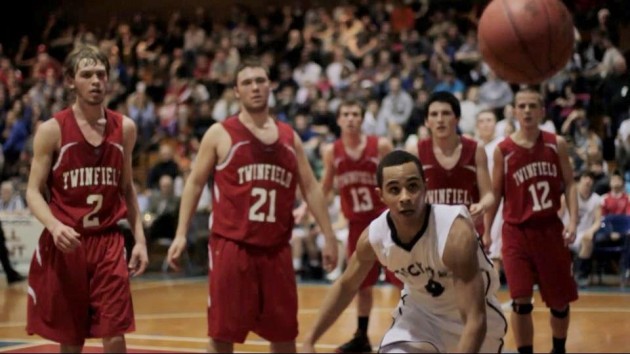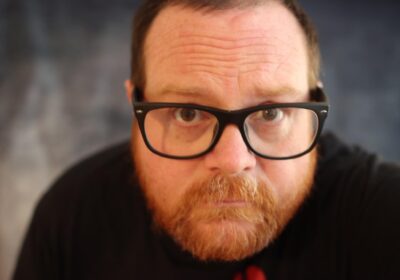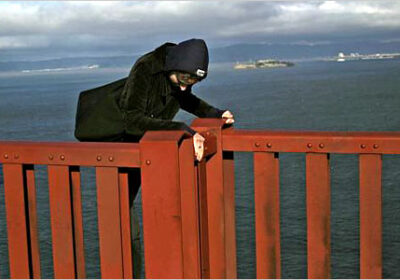Similar walk leads to retirement reflection

It was the last day of March. Dull gray snow still framed the college walkways, and a cold wind cut through my sweater as I walked from Stafford Academic Center back to my office in Leavenworth. As usual, I had hurried over to class a few hours earlier without bothering to wear a jacket. I regretted that oversight.
I had spent part of the previous four hours talking with students about time travel, dystopian futures and the tensions between humans and technology as explored in the “Terminator” film franchise. “I’ll be back,” bounced about in my head in the requisite thick Austrian accent as questions of time and place, and thoughts of the future and change absorbed me.
How many times had I made this same walk? A thousand times or more? How many times had I talked about themes and issues raised in films? Countless? How many students had sat in my films classes over the last 25 years? Two-thousand or more? And how many students had been changed in some small way by that class experience? Who can say?
In recent years, the broader education communities have focused much time and energy on assessing student-learning outcomes. And perhaps there are useful ways to measure this. But when it comes down to brass tacks, as a teacher, the best outcome I can hope for is that some small thing I do or say, some insight I share, or some task I assign might increase a student’s understanding and appreciation of the world in which he or she dwells.
In time, if that appreciation can help students to see things differently, or develop new skills, or forge a new path, or even just to see the connections between their worldviews and those of others, I consider that real success.
Like many of my colleagues, I cherish those students who take something truly meaningful or practical away from our classes and have the kindness to tell us or thank us at some point, sooner or later, in their lives. Such comments help us to keep on going and believing in the value of our professional lives.
And when a former Intro to Film Studies student, already 10 or more years out of school, recognized me out of the blue in a Burlington shopping mall and came up to discuss a film he just viewed, I could not help but feel a real sense of accomplishment. More than a decade later and something still resonated; now that’s a measurement worth taking.
Too often I hear myself and my colleagues waxing nostalgic about students we had in the past. We go on about how motivated and eager to learn those students were in comparison to those in our classes now. We sigh about how students of today seem more concerned with the tweets and texts blinking on their phones than the conversations and activities taking place in the classroom. And there may be some truth in the observation that this generation appears more distracted than engaged on the surface, but I cannot help wondering if there is something more to it than that. Are these surface distractions merely a new form of doodling? Are they windows into the kinds of skills this generation will need for future success?
There can be no doubt that the world we now inhabit is increasingly dependent on technology, and it is likely that certain technologies are reshaping what qualifies as knowledge. When I look at students using smartphones to find answers to questions, I can only reflect on how much the handheld calculator changed practices and skills required or expected in math courses. And I wonder how we, as teachers, can find ways to understand and incorporate these technological changes into our courses so that they can enhance rather than diminish the learning experience.
I do not believe the dark dystopian world of so many science fiction films, where humanity is undone or at war with its own technological inventions is inevitable. But I do believe we will need to find the right balance between these powerful and potentially addictive devices and our abilities to focus on the “here and now” and the meaningful moments in our lives.
So as I made my way to Leavenworth on that cold March night, I reflected on my years at Castleton: on all the changes I have witnessed, on the new and not so new faces of buildings and people, and on the changing landscapes and pathways we travel both physically and technologically.
Most of all, I thought of the challenges we have faced and continue to face as a teaching and learning community. In a few weeks I will be officially a member of the “early retired,” and though I plan to teach part-time in the future. I can not help but spend some time reflecting on the role, however small, I played in shaping and being shaped by how we at Castleton met those challenges.
As I reflect, I am often reminded of the ancient observation that “the only thing that is constant is change.” And there is a contemporary understanding that we often fail to perceive change, as we tend to latch on to the familiar things that echo around us rather than actually perceive the discreet and distinct before us.
So that night it occurred to me that I had never actually walked that path from Stafford to Leavenworth before because the path itself had changed. The receding snow, the wind, the few faces I passed, were specific to that walk on that evening. I just needed to see things for what they were, for what they had to offer in that time and place.
And that is what I hope to take with me and what I hope I have given to my students over the years: the power to see things anew, to accept and guide change and stay engaged in the worlds they travel and help to shape, and above all to see and feel the journey, to navigate the twists and turns, to endure the pains and to behold the joys.








